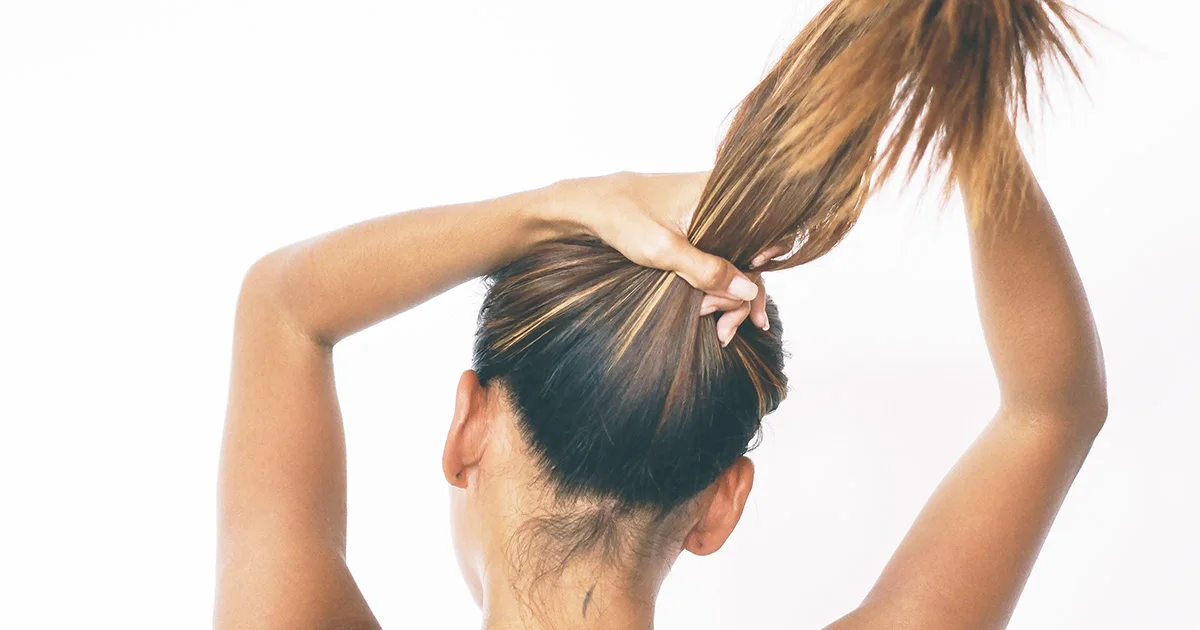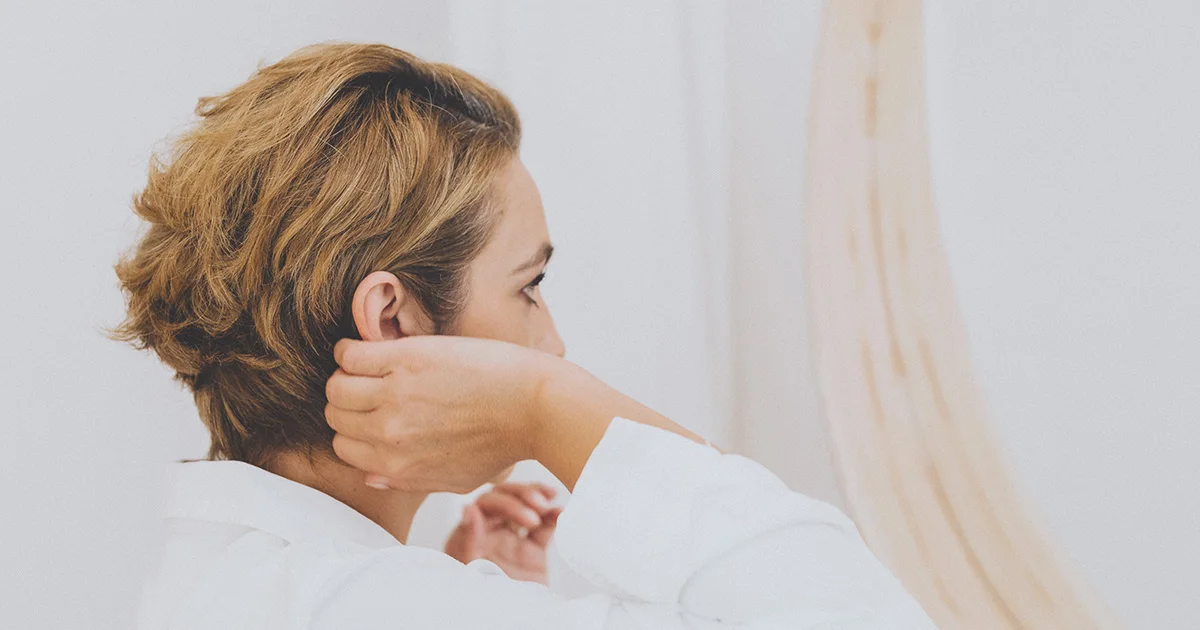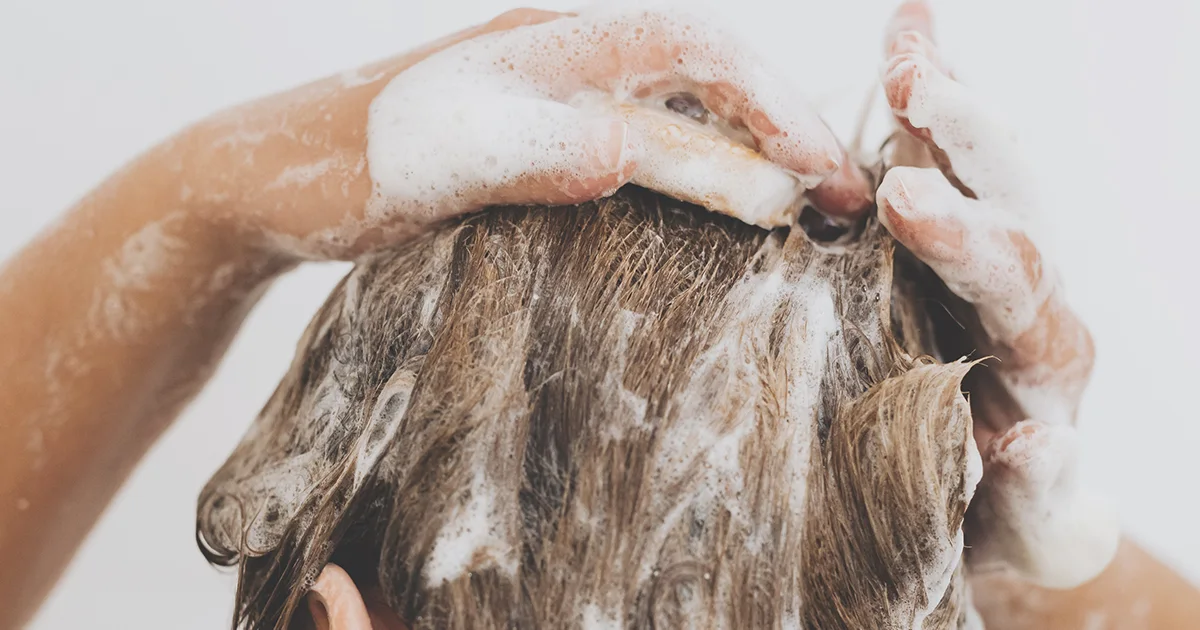Here's what we'll cover
Here's what we'll cover
If you’re trying to control a flaky scalp with Head & Shoulders shampoo, and you’re noticing hair loss, you may be wondering, “does Head and Shoulders cause hair loss?”
The short answer? There is no solid evidence that the classic Head & Shoulders formula—a shampoo people have used for decades—leads to hair loss. However, there are a few possible explanations.
To start, it’s important to understand what’s going on with your scalp, which formula you’re using, how it works, and if you are sensitive to the ingredients.
Can Head and Shoulders cause hair loss?
There is no solid research showing classic Head and Shoulders shampoo causes hair loss. In fact, most studies show it can improve hair growth in some people with severe dandruff. That’s because this treatment can help improve the health of your scalp, an essential part of healthy hair (Mangion, 2021).
Dandruff is a common skin condition. It can be mild and result in a few flakes, or more severe, leading to a scaly, itchy scalp. It’s often considered on the same spectrum as seborrheic dermatitis which can affect the scalp, face, ears, and upper chest. Both can cause white or yellow flakes and scaling that’s either dry or oily (Borda, 2015).
Severe dandruff can lead to itching and damage to the hair follicle, which can trigger hair loss. If you’re noticing hair loss, it may be linked to an unhealthy scalp rather than the shampoo. One study showed that normal, non-dandruff scalps lose 50–100 hairs within a two-day span, while dandruff scalps lost double that amount (Piérard-Franchimont, 2006).
It’s also important to note that there are different over-the-counter Head & Shoulders products. Head & Shoulders Clinical Strength contains an ingredient that can be harsh on the hair and has been linked to hair loss in some cases if not used properly. That’s why it's important to check the label and follow directions (FDA, 2022-a; MedlinePlus, 2017).
What does Head and Shoulders do?
Head & Shoulders and other anti-dandruff shampoos work by targeting fungal overgrowth on the scalp, which has been linked to dandruff.
Though there are different causes of a flaky, itchy scalp, research shows an imbalance of a fungus (yeast) called Malassezia is often a factor. Everyone has this common yeast on their scalp. It feeds on sebum—the oily substance in the skin around the scalp, face, and back.
As it consumes sebum, Malassezia releases a by-product—oleic acid—which can irritate the skin. Some people are more sensitive to Malassezia or have an overgrowth of this yeast due to genetics, oily skin, or lowered immunity. This can trigger inflammation, damage the scalp and hair follicles, and cause scalp cells to clump and flake off (Li, 2022; Mangion, 2021).
Products like Head & Shoulders reduce dandruff by slowing the growth of fungi. Some ingredients also slow down skin growth and slough off dead skin, which can also reduce flaking (Borda, 2015).
What are the ingredients in Head and Shoulders?
The various formulas of Head & Shoulders contain one of the following antifungals as an active ingredient:
Zinc pyrithione
Zinc pyrithione 1% is the active ingredient in the classic Head & Shoulders formula. It’s a common ingredient in dandruff shampoos that may help reduce hair loss due to this condition (FDA, 2022-b; Trüeb, 2018).
Selenium sulfide
Selenium sulfide 1% is the active ingredient in Head & Shoulders Clinical Strength formula. At 1%, it’s not considered strong enough to damage hair. In the U.S., 2.5% selenium sulfide requires a prescription. At higher strengths, selenium sulfide has been linked to hair loss if left on too long, though this is not a common side effect (FDA, 2022-a; MedlinePlus, 2017).
Other ingredients
There are a variety of other ingredients in Head & Shoulders depending on the formula. Salicylic acid helps exfoliate dead skin cells, which can keep them from clumping together and forming flakes (Ranganathan, 2010). Some formulas have moisturizers like coconut oil.
Sometimes, inactive ingredients in shampoos and hair care products can cause a skin reaction known as contact dermatitis. For instance, detergents, fragrances, and preservatives can trigger a reaction in some people. They have been linked to hair loss, though it’s rare (Aleid, 2017). Sulfates like sodium lauryl sulfate help create a sudsy lather but can lead to dry scalp and irritation (Dias, 2021).
If an ingredient is causing irritation or other side effects, it’s best to check with your healthcare providers about other options. Ketoconazole and ciclopirox are often used to treat dandruff. A custom-blended product that limits irritants and dryness may help.
What causes hair loss?
Dandruff can overlap and sometimes worsen underlying hair loss that’s not linked to dandruff (Piérard-Franchimont, 2006). That’s why it often takes a dermatologist to figure out the causes of hair loss, also known as alopecia. Some common causes of hair thinning include:
Androgenic alopecia
Androgenic alopecia, also known as “male pattern baldness” or “female pattern baldness,” is the most common type of hair loss. It’s genetic, and can result in permanent hair loss if untreated (Al Aboud, 2022).
Alopecia areata
This type of alopecia is an autoimmune condition where the body attacks its own hair, leading to sporadic and sometimes chronic or permanent hair loss (Lepe, 2020).
Telogen effluvium
Telogen effluvium can be caused by anything that stresses the body. This can be a skin irritant from a hair product, stress, illness, medications, weight loss, nutritional deficiencies. Even taking too many oral vitamins like selenium or vitamin A can trigger telogen effluvium (Al Aboud, 2022; Almohanna, 2019).
The stressor triggers hairs in the growth (anagen) phase to move into the resting (telogen) phase, and then causes telogen hairs to fall out. It usually leads to temporary, diffuse hair shedding, and not complete baldness.

Hair breakage
Some hair products, heat treatments, and types of hairstyles can lead the hair shaft to become weak, causing it to break off at the root. Any ingredient that causes the scalp to itch or burn may lead to scratching and hair follicle damage (Billero, 2018).
How can you treat hair loss?
If you’re noticing hair loss, figuring out the cause is the first step. Avoiding some hair care products or switching to milder options may solve the problem, allowing hair to regrow on its own if the condition is linked to the product.
Keep in mind that hair loss linked to products is not common. In cases where there is hair thinning, the hair is not growing back or is slow to regrow, there’s a good chance a more permanent or chronic type of hair loss is involved.
Minoxidil (Rogaine) helps stimulate hair growth, and may be used to treat different forms of hair loss (Badri, 2021).
Another common treatment, finasteride, blocks an enzyme called 5-alpha-reductase from converting testosterone to dihydrotestosterone (DHT). Excess amounts of DHT can shrink hair follicles. Minoxidil and finasteride (Propecia) are commonly prescribed together to treat androgenetic alopecia. While finasteride is not FDA-approved for use in women due to a risk of birth defects, some women do use it off-label and experience hair growth (Iamsumang, 2020).
If an autoimmune condition is driving hair loss, immunosuppressants may help (Lepe, 2022).
If you’re noticing hair loss, it’s best to see a healthcare provider to find out all potential causes. Effective hair loss treatment sooner rather than later could help prevent further hair thinning and may be able to help reverse hair loss.
Oral Minoxidil Important Safety Information: Read more about serious warnings and safety info.
Finasteride Important Safety Information: Read more about serious warnings and safety info.
DISCLAIMER
If you have any medical questions or concerns, please talk to your healthcare provider. The articles on Health Guide are underpinned by peer-reviewed research and information drawn from medical societies and governmental agencies. However, they are not a substitute for professional medical advice, diagnosis, or treatment.
Al Aboud, A. & Zito, P. (2022). Alopecia. Stat Pearls. Retrieved on Jan. 13, 2023 from https://www.ncbi.nlm.nih.gov/books/NBK538178/
Aleid, N. M., Fertig, R., Maddy, A., & Tosti, A. (2017). Common allergens identified based on patch test results in patients with suspected contact dermatitis of the scalp. Skin Appendage Disorders , 3 (1), 7–14. doi:10.1159/000453530. Retrieved from https://www.karger.com/Article/Fulltext/453530
Almohanna, H. M., Ahmed, A. A., Tsatalis, J. P., & Tosti, A. (2019). The role of vitamins and minerals in hair loss: A review. Dermatology and Therapy , 9 (1), 51–70. doi:10.1007/s13555-018-0278-6. Retrieved from https://www.ncbi.nlm.nih.gov/pmc/articles/PMC6380979/
Badri, T., Nessel, T. & Kumar, D. (2021). Minoxidil. Stat Pearls. Retrieved on Jan. 13, 2023, from https://www.ncbi.nlm.nih.gov/books/NBK482378/
Billero, V. & Miteva, M. (2018). Traction alopecia: The root of the problem. Clinical, Cosmetic and Investigational Dermatology , 11 , 149–159. doi:10.2147/ccid.s137296. Retrieved from https://pubmed.ncbi.nlm.nih.gov/29670386/
Borda, L. & Wikramanayake, T. (2015). Seborrheic dermatitis and dandruff: A comprehensive review. Journal of Clinical and Investigative Dermatology , 3 (2). doi:10.13188/2373-1044.1000019. Retrieved from https://www.ncbi.nlm.nih.gov/pmc/articles/PMC4852869/
Dias, M. F., Loures, A. F., & Ekelem, C. (2021). Hair cosmetics for the hair loss patient. Indian Journal of Plastic Surgery , 54 (04), 507–513. doi:10.1055/s-0041-1739241. Retrieved from https://www.ncbi.nlm.nih.gov/pmc/articles/PMC8719955/
Iamsumang, W., Leerunyakul, K., & Suchonwanit, P. (2020). Finasteride and its potential for the treatment of female pattern hair loss: Evidence to date. Drug Design, Development and Therapy , 14 , 951–959. doi:10.2147/dddt.s240615. Retrieved from https://www.ncbi.nlm.nih.gov/pmc/articles/PMC7060023/
Lepe, K. & Zito, P. (2022). Alopecia areata. Stat Pearls. Retrieved on Jan. 13, 2023 from https://www.ncbi.nlm.nih.gov/books/NBK537000 /
Li, J., Feng, Y., Liu, C., et al. (2022). Presence of malassezia hyphae is correlated with pathogenesis of seborrheic dermatitis. Microbiology Spectrum , 10 (1). doi:10.1128/spectrum.01169-21. Retrieved from https://www.ncbi.nlm.nih.gov/pmc/articles/PMC8754105/
Mangion, S. E., Holmes, A. M., & Roberts, M. S. (2021). Targeted delivery of zinc pyrithione to skin epithelia. International Journal of Molecular Sciences , 22 (18), 9730. doi:10.3390/ijms22189730. Retrieved from https://www.ncbi.nlm.nih.gov/pmc/articles/PMC8465279/
MedlinePlus. (2017). Selenium sulfide: Medlineplus drug information. MedlinePlus. Retrieved on Dec. 13, 2022 from https://medlineplus.gov/druginfo/meds/a682258.html
Piérard-Franchimont, C., Xhauflaire-Uhoda, E., & Piérard, G. E. (2006). Revisiting dandruff. International Journal of Cosmetic Science , 28 (5), 311–318. doi:10.1111/j.1467-2494.2006.00326.x. Retrieved from https://onlinelibrary.wiley.com/doi/10.1111/j.1467-2494.2006.00326.x
Ranganathan, S. & Mukhopadhyay, T. (2010). Dandruff: the most commercially exploited skin disease. Indian Journal of Dermatology, 55 (2), 130–134. doi:10.4103/0019-5154.62734. Retrieved from https://www.ncbi.nlm.nih.gov/pmc/articles/PMC2887514/
Trüeb, R. M., Henry, J. P., Davis, M. G., et al. (2018). Scalp condition impacts hair growth and retention via oxidative stress. International Journal of Trichology, 10 (6), 262–270. doi:10.4103/ijt.ijt_57_18. Retrieved from https://www.ncbi.nlm.nih.gov/pmc/articles/PMC6369642/
U.S. Food & Drug Administration (FDA). (2022-a). Head and shoulders classic clean dandruff- pyrithione zinc shampoo. FDA Report . Retrieved on Jan. 13, 2023 from https://fda.report/DailyMed/3886d51a-b946-4862-a237-e8232df95637
U.S. Food & Drug Administration (FDA). (2022-b). Head and shoulders clinical strength- selenium sulfide lotion/shampoo. FDA Report. Retrieved on Jan. 13, 2023 from https://fda.report/DailyMed/83cb18cf-627f-4616-92d0-09cbebbc6d1d










